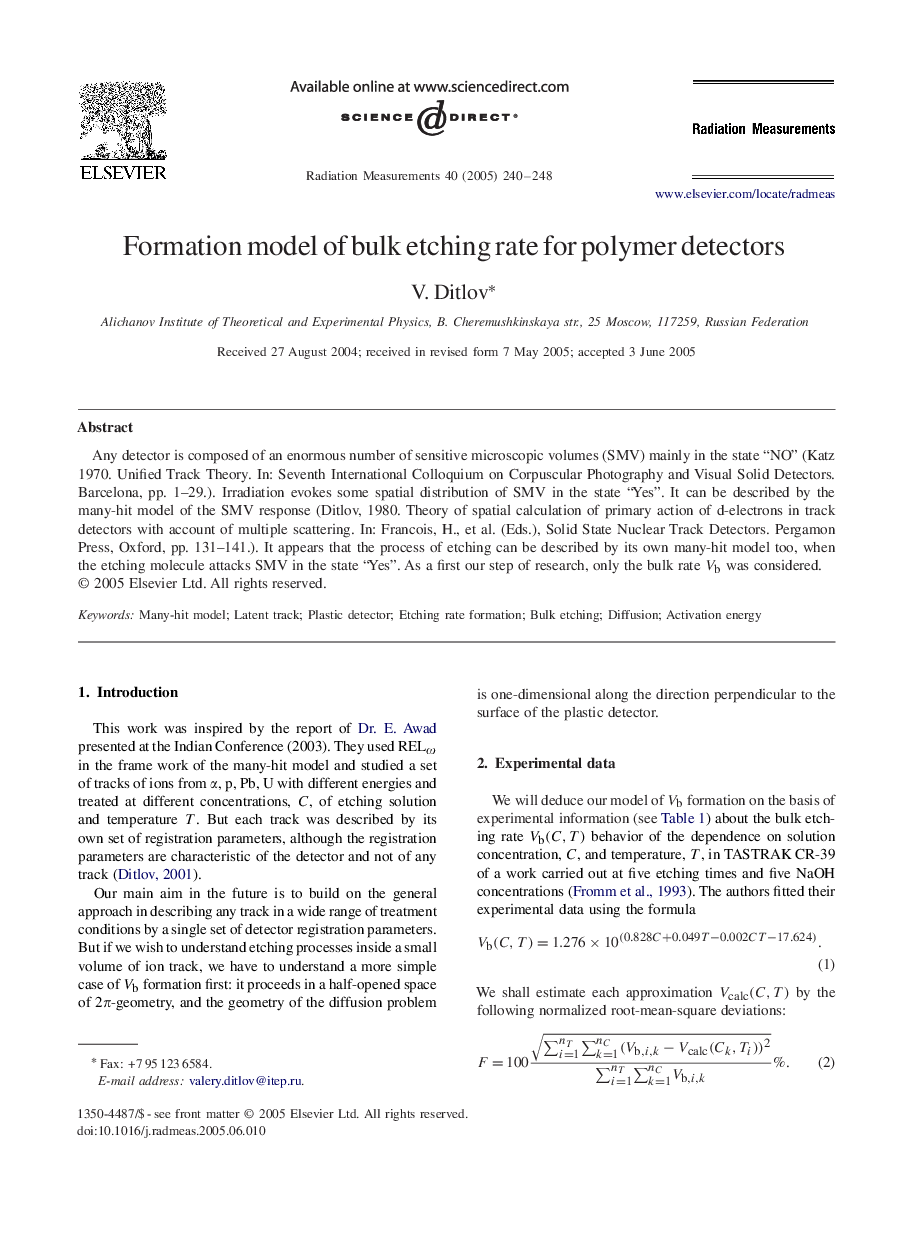| Article ID | Journal | Published Year | Pages | File Type |
|---|---|---|---|---|
| 9875899 | Radiation Measurements | 2005 | 9 Pages |
Abstract
Any detector is composed of an enormous number of sensitive microscopic volumes (SMV) mainly in the state “NO” (Katz 1970. Unified Track Theory. In: Seventh International Colloquium on Corpuscular Photography and Visual Solid Detectors. Barcelona, pp. 1-29.). Irradiation evokes some spatial distribution of SMV in the state “Yes”. It can be described by the many-hit model of the SMV response (Ditlov, 1980. Theory of spatial calculation of primary action of d-electrons in track detectors with account of multiple scattering. In: Francois, H., et al. (Eds.), Solid State Nuclear Track Detectors. Pergamon Press, Oxford, pp. 131-141.). It appears that the process of etching can be described by its own many-hit model too, when the etching molecule attacks SMV in the state “Yes”. As a first our step of research, only the bulk rate Vb was considered.
Related Topics
Physical Sciences and Engineering
Physics and Astronomy
Radiation
Authors
V. Ditlov,
